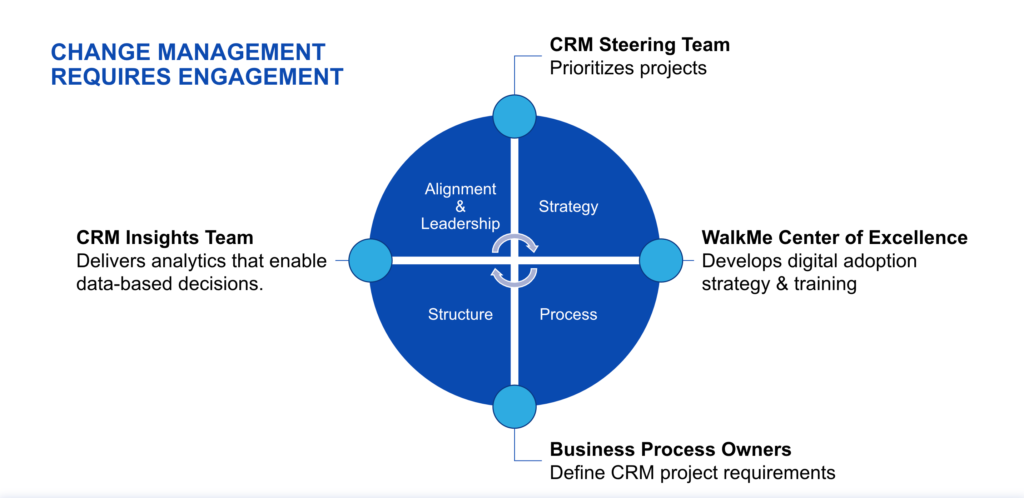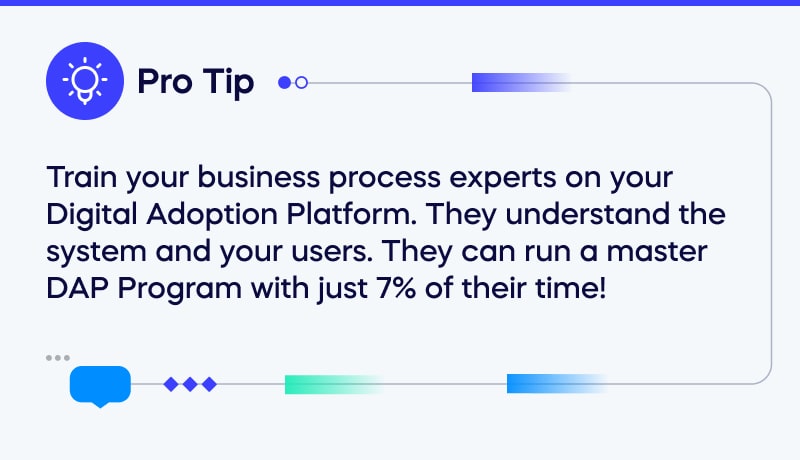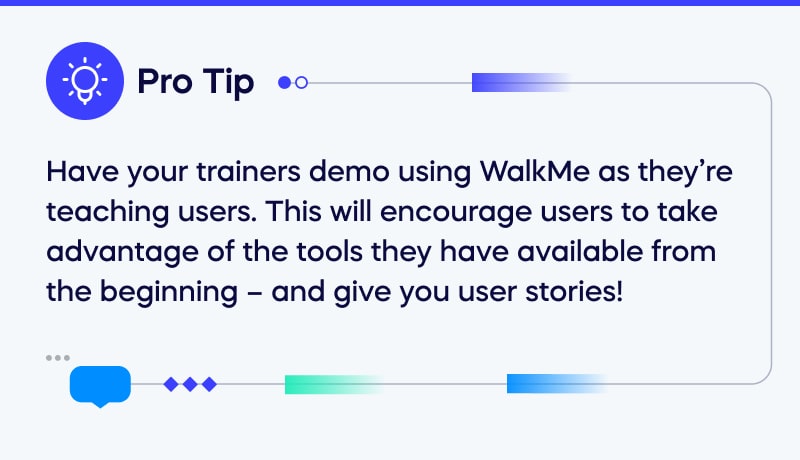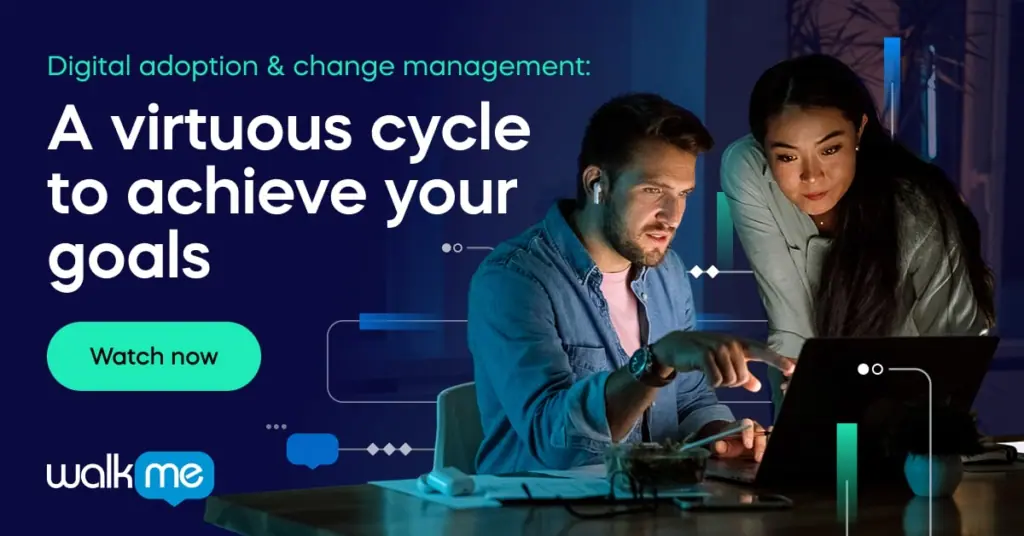Implementing a strong digital adoption program requires more than building an in-app learning platform. Just as true change management doesn’t begin or end at user training, your digital adoption journey begins with a strong strategy, and it doesn’t end. It just evolves.
Prepare for change
Objective: Realize the full value of the business systems we use every day.
Once you have a clearly defined objective based on your digital adoption strategy, it’s time to bring your stakeholders into the fold. You know the change you want to achieve, and now you need the people to help you get there because effective change management requires good cross-functional engagement from planning through execution.

Who belongs on your team?
Your sponsors:
- Who’s going to make sure your efforts are in line with your company’s strategic direction?
- Who’s going to advocate for you at the leadership level?
- Who’s going to reinforce the benefits of adoption at the user level?
Your teammates:
- Who are your business process experts that know how and why things need to be done?
- Who are the technical experts who understand your business systems?
- Who has the project management and technical curiosity to learn how to build solutions on your digital adoption platform?
- Who are your analytics experts that are going to be able to translate your insights into actions?

Manage the change
You probably have lofty goals for your digital adoption program, which means you need to get yourself organized to tackle one piece at a time. There are two simple steps to start: Listen and learn.
Listen to your users.
- What are their pain points?
- Where are they spending the most time?
- What’s going to make it easier for them to do their jobs?
Learn from your system admins.
- What is the baseline data telling you?
- What kinds of support tickets do they get the most?
This discovery is going to give you incredible insight into how to improve the current state of things. From there, you also need to work with your sponsors and subject matter experts to understand the desired future state. Ask them what they cover in their business reviews with the target user groups, the KPIs they’re tracking, and what success looks like to them. You’re looking for definition and clarification of the business need; not the technical solution.
Prioritizing your work will be a balancing act, but it will be well worth it! You’ll be able to plan effectively with the resources you have available, and you’ll be able to set realistic expectations with your sponsors.

Reinforce the change
You’re going to see results, and you’re going to see them quickly. Remember that digital adoption is a continuously evolving and improving journey. You need to drive lasting change, and you can’t do that by simply achieving a desired result, brushing off your hands, and calling it done.
Share the results with your team. Share them often.
Recognize what they’ve achieved and ask them for their ideas about what’s next. They’re going to be excited about the impact they’re making, and that will motivate them to apply what they have learned to make an even greater impact!
The key is to stay connected. Use collaboration sites, like Teams or Slack to give kudos between meetings. Make your analytics available so they can dig deeper, and ensure they understand the methods you’re using to calculate your KPIs.
Share the results with your sponsors. Share them regularly.
Present the data in context with stories that help them visualize how much easier it is for people to do their jobs. Are your less-techy users completing a new process without errors? Share it!
Are your tech savvy users building skills that will help them advance in their career? Share it!
And while you’re sharing, explain how the team is applying what they’ve learned to take your program to the next level.
Keep running through this cycle, and eventually, you’re going to look back and think, “Wow! We really did that!” And you did.

Want more?
Hear more about our approach, advice, and best practices on the DAP Pro Show! View the recording: DAP Through It: Digital Adoption Principles for Successful Change Management.

